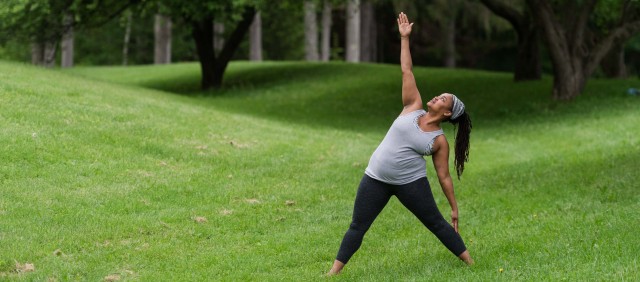Why Laughter and Crying Are Good for Us

May 3, 2020
Finding yourself riding the waves of some intense emotions lately, with some tears and (hopefully) some belly laughs along the way? Humans are the only species that cries as an expression of emotion, and one of very few (along with apes and possibly rats) that laugh. While scientists aren’t exactly sure why, what they do agree on is that both tears and giggles provide a natural emotional and biological reset—which all of us need these days. There’s a physiological explanation for the cathartic experience you get from a good laugh or a good cry, and both offer a whole range of benefits, from increased immunity to a flood of "feel-good" hormones.
Seen through the lens of the chakras, these emotional releases can dissolve energy blocks, says Jurian Hughes, a voice coach, performer, and faculty member for the Kripalu School of Yoga. “When it comes to both laughter and tears, the scientific benefits validate what we instinctively feel,” says Jurian. “They both take us into a greater state of flow—a flow of energy, a flow of sound, a flow of tears.”
The physical act of crying or laughing activates the energy centers, she says. “We’re using the respiratory, abdominal, and diaphragm muscles—the heart chakra and the solar plexus area, or third chakra, which is the center of communication, power, and joy.”
In her Kripalu R&R workshops and programs, Jurian guides participants through both laughter and crying exercises, as a way of loosening their inhibitions around self-expression. Rather than beginning with an emotional cue, she takes people through the physical actions of sobbing, laughing, or having a tantrum, and lets the rest follow.
The Benefits of Yukking It Up
That’s also how Laughter Yoga works. “Laughter, fake or real, stimulates the release of seratonin and endorphins in the brain, which helps us relax and feel more openhearted and alive,” says Evelyn Gonzalez, a Kripalu Yoga and Laughter Yoga teacher.
Other benefits of laughter, according to the Mayo Clinic, include increased oxygen intake, better circulation and lower blood pressure, and higher levels of disease-fighting natural killer cells, as well as a more positive state of mind. A study of 70 depressed elderly women found that Laughter Yoga—created by Madan Kataria, a medical doctor from Mumbai, India, known as the “guru of giggling”—was just as effective as exercise therapy in improving mood.
While Laughter Clubs have been meeting in India since Kataria introduced Laughter Yoga in 1955, Japan’s communal practice of rui-katsu, or “tear seeking,” is a newer phenomenon. The trend was started in 2013 by Hiroki Terai, whose business conducting divorce ceremonies opened his eyes to how much better people seemed to feel after crying it out. At a typical rui-katsu event, participants watch a series of tear-jerking videos, from poignant commercials and movie clips to memorials for pet cats. The goal is to destigmatize the release of emotion for citizens of this notoriously crying-averse country. (In a poll of 37 nationalities, Japanese ranked among those least likely to cry, while Americans were most likely.)
The Tracks of Our Tears
“Unexpressed feelings create rigidity and tension, which crying can alleviate,” says Antonio Sausys, a somatic psychologist and yoga therapist specializing in grief counseling and therapy. “From a psychological standpoint, crying can relieve emotional stress and boost a positive mood. From a social standpoint, crying in the presence of others elicits sympathy and a tendency to help and comfort. Depending on the environment and the circumstances, it can improve communication and forge bonds.”
Research shows that crying may help to regulate mood, restoring the balance between the sympathetic and parasympathetic systems, and may even be more effective than an antidepressant. Studies have also found that tears rid the body of chemicals that raise cortisol, the stress hormone. According to classical Ayurvedic texts, tears from the innermost corner of the eye indicate true sadness or loneliness, tears from the middle of the eye stem from anger, and tears from the outermost corner express love and compassion, explains Elizabeth Crone, a student in the Kripalu School of Ayurveda (KSA) who looked at crying through the lens of this ancient health science for her KSA research project.
Jurian finds that giving people permission to cry can catalyze a breakthrough. “Our culture teaches us that, past a certain age, tears are not socially acceptable,” she says. “I want to empower people to claim that part of themselves. Just as, in yoga, we want to have access to a full range of motion, we also want to have access to a full range of emotions, so we can be more of who we were meant to be.”

